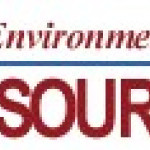- Branche: Government
- Number of terms: 3992
- Number of blossaries: 2
- Company Profile:
An air pollutant for which acceptable levels of exposure can be determined and for which an ambient air quality standard has been set. Examples include: ozone, carbon monoxide, nitrogen dioxide, sulfur dioxide, and PM10 and PM2. 5. The term "criteria air pollutants" derives from the requirement that the U. S. EPA must describe the characteristics and potential health and welfare effects of these pollutants. The U. S. EPA and CARB periodically review new scientific data and may propose revisions to the standards as a result. View our health and air pollution website.
Industry:Pollution control
An air pollution control device that traps particulates by forcing gas streams through large permeable bags usually made of glass fibers. For more information, please go tou our baghouse training website.
Industry:Pollution control
An air pollution control device that removes particulate matter from an air stream by imparting an electrical charge to the particles for mechanical collection at an electrode. For more information, please see our associated training class on this subject.
Industry:Pollution control
An air pollution control device that removes larger particles -- generally greater than one micron -- from an air stream through centrifugal force.
Industry:Pollution control
An air pollutant, identified in regulation by the ARB, which may cause or contribute to an increase in deaths or in serious illness, or which may pose a present or potential hazard to human health. TACs are considered under a different regulatory process (California Health and Safety Code section 39650 et seq. ) than pollutants subject to CAAQSs. Health effects to TACs may occur at extremely low levels, and it is typically difficult to identify levels of exposure which do not produce adverse health effects. For more information, please view our toxics website.
Industry:Pollution control
An air pollutant listed under section 112 (b) of the federal Clean Air Act as particularly hazardous to health. Emission sources of hazardous air pollutants are identified by U. S. EPA, and emission standards are set accordingly. For more information, please go our Title III website area.
Industry:Pollution control
An air emission limitation that applies to existing sources and is based on the maximum degree of reduction achievable, taking into account environmental, energy, and economic impacts by each class or category of source. (See also Best Available Control Technology. ) For more information, please go to our BARCT website.
Industry:Pollution control
An air analyzer that measures air quality components continuously. (See also Integrated Sampling Device. )
Industry:Pollution control
Also called Cleaner Burning Gasoline (CBG). Gasoline with a different composition from conventional gasoline (e.g., lower aromatics content) that results in the production of lower levels of air pollutants. For more information, please go to our cleaner burning gasoline website.
Industry:Pollution control
Air pollution caused by woodburning stoves and fireplaces that emit particulate matter, carbon monoxide and odorous and toxic substances. For more information, please see our disposal of non-industrial wood waste website.
Industry:Pollution control
